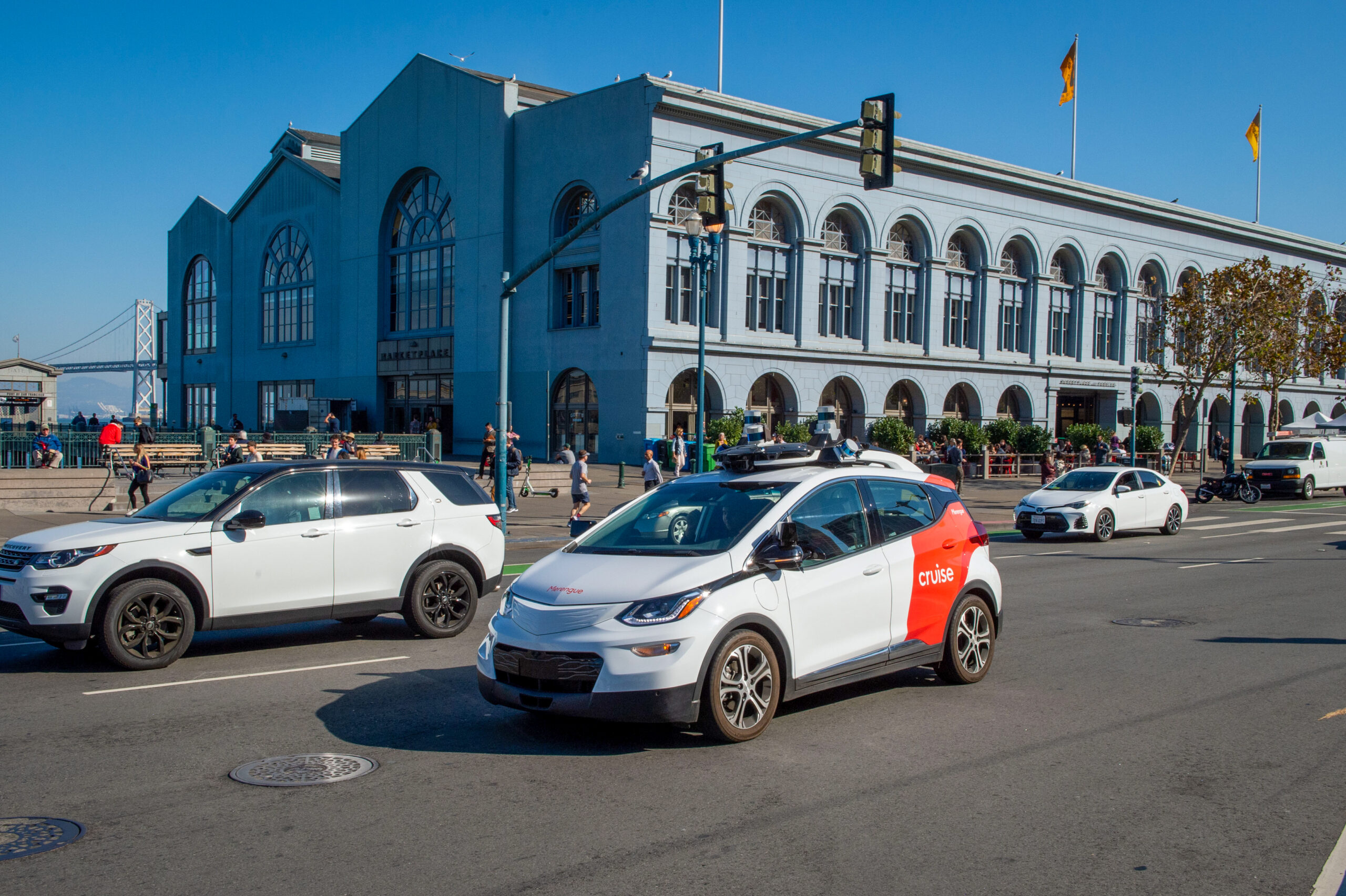Over the weekend, a viral video emerged showing a driverless Cruise car being pulled over by police officers in San Francisco’s Richmond District for failing to have its headlights on at night. The vehicle appears to take off briefly before coming to a stop on the next block.
According to Cruise, the vehicle wasn’t intending to set off a chase but was pulling over to the nearest safe location for a traffic stop. The SFPD officers contacted Cruise through a dedicated phone number, and no citation was ultimately issued.
While the April 1 incident resulted in scores of jokes about the concept of a driverless car “on the lam” or the idea of San Francisco recruiting robocops for robocars, it also raises real questions about how these increasingly common interactions will be handled, particularly as autonomous vehicle technology continues its proliferation on San Francisco’s streets.
A Cruise spokesperson attributed the vehicle’s headlights being off to human error and said the company has fixed the issue which led to the problem.
Currently, only General Motors’ Cruise division and Google subsidiary Waymo operate fully driverless rides for passengers in San Francisco. The city—with its densely populated urban environment, unique geography and proximity to Big Tech —has functioned as an ideal proving ground for these types of vehicles.
The companies are limited to certain areas and certain hours of operation during clear weather days, generally late at night and in the early morning.
As part of the permitting process with California’s Department of Motor Vehicles, the companies are required to complete and submit what’s known as a “law enforcement interaction plan,” which governs vehicle interactions with law enforcement, first responders and during emergency situations.
Cruise’s interaction plan includes how to identify one of the company’s vehicles and where public safety officials can find documents like proof of insurance, vehicle registration and its DMV testing permit.
According to the plan, each Cruise autonomous vehicle contains a two-way audio communications link inside the vehicle and is equipped with 24/7 OnStar functionality that is designed to trigger automatically in the event of an accident. Cruise personnel can remotely unlock the vehicle, disengage autonomous driving and confirm its operating status. The emergency line for Cruise vehicles is 888-662-7103.
Waymo has two public interaction plans for its Chrysler Pacifica and its Jaguar I-Pace models. To disable the autonomous driving functions in an emergency situation, the company says emergency personnel should break a window if doors are locked and immediate entry to the vehicle or ventilation is necessary. Waymo also says the vehicle will not drive autonomously while airbags are deployed, any door is open or if the parking brake is applied. The emergency phone line for Waymo vehicles is 1-877-503-0840.
Jim Dudley, a criminal justice lecturer at San Francisco State University and 32-year veteran of the San Francisco Police Department, said the viral incident is an example of the challenges in regulating emerging technology.
“I think we’re a little bit behind in the policymaking, and as we’ve seen this slow rollout really speed up, it’s really no surprise that something like this would happen,” Dudley said. “Although to its credit, it pulled over and reacted better and more safely to the police than some humans might have.”
While Dudley expects emergency personnel to have a clear line of communication with manufacturers in situations where intervention is needed, he said if he was still with SFPD he might suggest purchasing additional wheel locks or vehicle boots as a kind of manual kill switch.
